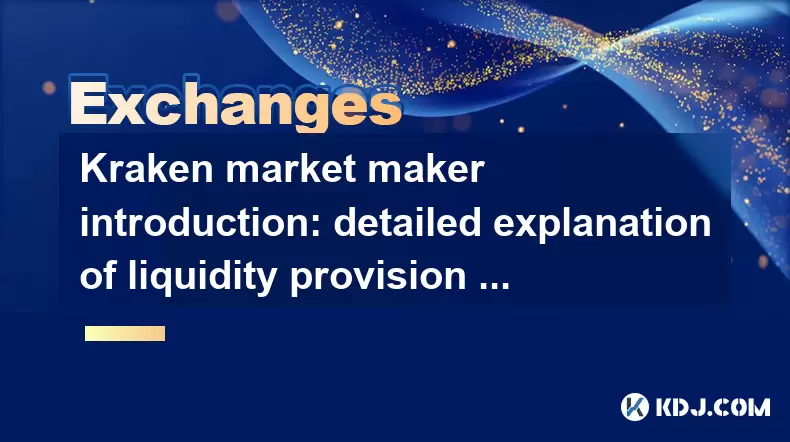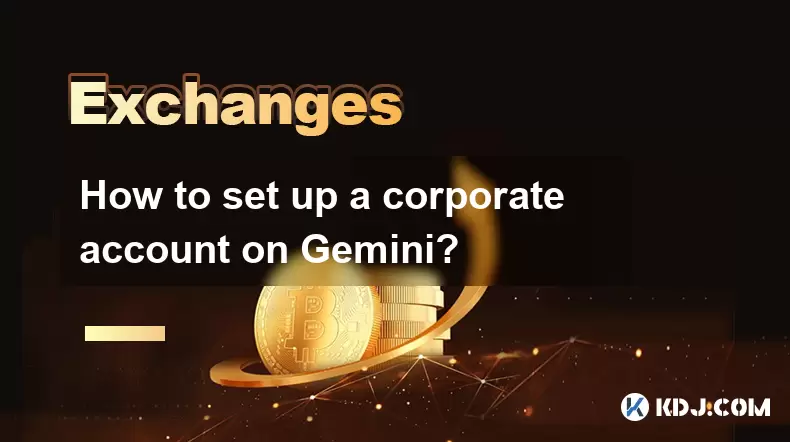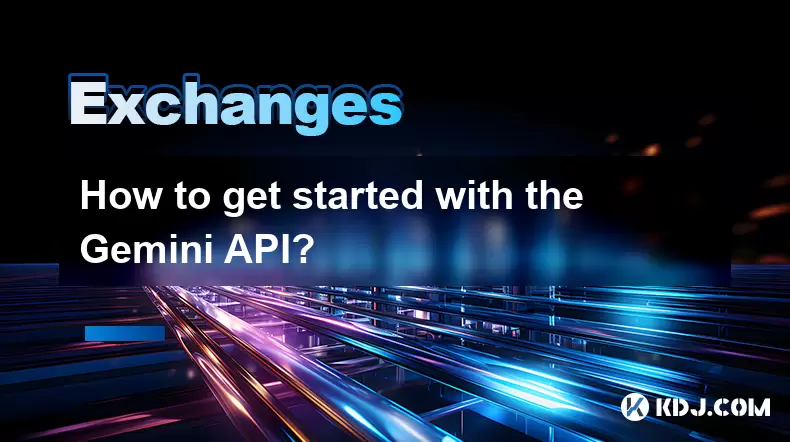-
 Bitcoin
Bitcoin $115000
0.12% -
 Ethereum
Ethereum $3701
4.50% -
 XRP
XRP $3.081
2.99% -
 Tether USDt
Tether USDt $0.0000
-0.01% -
 BNB
BNB $767.9
1.45% -
 Solana
Solana $169.5
3.13% -
 USDC
USDC $0.9999
0.01% -
 Dogecoin
Dogecoin $0.2106
4.30% -
 TRON
TRON $0.3334
1.62% -
 Cardano
Cardano $0.7564
2.54% -
 Stellar
Stellar $0.4165
0.76% -
 Hyperliquid
Hyperliquid $38.75
0.25% -
 Sui
Sui $3.593
3.00% -
 Chainlink
Chainlink $17.08
3.59% -
 Bitcoin Cash
Bitcoin Cash $573.6
4.35% -
 Hedera
Hedera $0.2508
-0.84% -
 Avalanche
Avalanche $23.07
6.46% -
 Ethena USDe
Ethena USDe $1.001
-0.02% -
 Litecoin
Litecoin $120.8
8.17% -
 UNUS SED LEO
UNUS SED LEO $8.943
-0.32% -
 Toncoin
Toncoin $3.400
-5.60% -
 Shiba Inu
Shiba Inu $0.00001255
1.54% -
 Uniswap
Uniswap $9.908
6.32% -
 Polkadot
Polkadot $3.718
2.10% -
 Monero
Monero $303.0
-0.74% -
 Dai
Dai $0.9999
-0.02% -
 Bitget Token
Bitget Token $4.392
0.91% -
 Cronos
Cronos $0.1403
6.31% -
 Pepe
Pepe $0.00001076
1.13% -
 Aave
Aave $267.2
1.80%
Kraken market maker introduction: detailed explanation of liquidity provision and income calculation
Kraken's market maker program rewards participants for enhancing liquidity through rebates, volume incentives, and performance metrics, ensuring efficient trading.
Jun 10, 2025 at 09:42 am

Kraken, one of the leading cryptocurrency exchanges, offers a market maker program designed to enhance liquidity and provide benefits to those who participate. In this article, we will delve into the specifics of the Kraken market maker program, focusing on how liquidity is provided and how income is calculated for market makers.
What is a Market Maker?
A market maker is an individual or entity that consistently provides buy and sell orders to a trading platform to facilitate trading and enhance liquidity. Market makers play a crucial role in ensuring that there is always a market for traders to buy and sell assets. On Kraken, market makers are incentivized to provide liquidity through a structured program that rewards them based on their activity and effectiveness.
The Role of Liquidity Provision on Kraken
Liquidity is essential for any trading platform as it ensures that traders can execute their orders quickly and at fair prices. Liquidity provision on Kraken involves market makers placing limit orders on both the buy and sell sides of the order book. This creates a tighter spread between the bid and ask prices, which benefits all traders by reducing slippage and improving the overall trading experience.
To become a market maker on Kraken, participants must meet certain criteria and follow specific guidelines. Kraken evaluates potential market makers based on their trading volume, the quality of their liquidity provision, and their adherence to the exchange's rules and regulations.
How to Become a Kraken Market Maker
Becoming a market maker on Kraken involves several steps. Here is a detailed guide on how to get started:
- Register on Kraken: If you are not already a user, you will need to create an account on Kraken. This involves providing your personal information and completing the necessary verification processes.
- Apply for the Market Maker Program: Once registered, you can apply for the market maker program through Kraken's official channels. This usually involves submitting an application form and providing details about your trading experience and capabilities.
- Meet the Requirements: Kraken has specific requirements for market makers, including minimum trading volumes and adherence to certain trading practices. Ensure that you meet these criteria before applying.
- Set Up Trading Bots: Market makers often use automated trading bots to place and manage their orders efficiently. Set up your bots according to Kraken's guidelines and ensure they comply with the exchange's rules.
- Start Providing Liquidity: Once approved, you can begin providing liquidity by placing limit orders on Kraken's trading pairs. Monitor your performance and adjust your strategies as needed to maximize your effectiveness.
Income Calculation for Kraken Market Makers
Income for market makers on Kraken is calculated based on several factors, including the volume of liquidity provided, the quality of the liquidity, and the fees generated from trading activity. Income calculation is a complex process that involves several components:
- Rebate Fees: Market makers receive a portion of the fees generated from the trades that execute against their orders. The exact rebate percentage can vary based on the trading pair and the market maker's tier within the program.
- Volume-Based Incentives: Kraken offers additional incentives for market makers who provide high volumes of liquidity. These incentives can include higher rebate percentages and other benefits.
- Quality of Liquidity: The quality of the liquidity provided is also a factor in income calculation. Market makers who maintain tight spreads and consistent order book depth are rewarded more generously.
- Performance Metrics: Kraken uses various performance metrics to evaluate market makers, such as the time-weighted average spread and the order-to-trade ratio. These metrics help determine the market maker's effectiveness and influence their income.
Monitoring and Adjusting Your Strategy
As a market maker on Kraken, it is essential to continuously monitor your performance and adjust your strategies as needed. Monitoring and adjusting your strategy involves several key steps:
- Track Your Performance: Use Kraken's market maker dashboard to track your performance metrics, including your trading volume, rebate earnings, and order book depth.
- Analyze Market Conditions: Stay informed about market conditions and adjust your trading strategies accordingly. Factors such as volatility and trading volume can impact your effectiveness as a market maker.
- Optimize Your Bots: Continuously optimize your trading bots to ensure they are placing orders efficiently and effectively. This may involve adjusting parameters such as order sizes, spread targets, and order placement frequency.
- Communicate with Kraken: Maintain open communication with Kraken's market maker support team. They can provide valuable insights and guidance to help you improve your performance.
Compliance and Best Practices
Compliance with Kraken's rules and regulations is crucial for maintaining your status as a market maker. Compliance and best practices include the following:
- Adhere to Trading Guidelines: Follow Kraken's trading guidelines and ensure that your orders comply with the exchange's rules. This includes avoiding manipulative trading practices and maintaining fair and orderly markets.
- Maintain Accurate Records: Keep accurate records of your trading activity and performance. This can help you track your progress and make informed decisions about your strategies.
- Stay Informed: Stay informed about updates to Kraken's market maker program and any changes to the exchange's rules and regulations. This will help you stay compliant and take advantage of new opportunities.
Frequently Asked Questions
Q: How long does it take to get approved as a market maker on Kraken?
A: The approval process for becoming a market maker on Kraken can vary depending on several factors, including the completeness of your application and your trading experience. Typically, it can take anywhere from a few days to a few weeks to receive approval.
Q: Can I use multiple trading accounts to participate in the market maker program?
A: Kraken's policies may vary, but generally, using multiple accounts to participate in the market maker program is not allowed. It is essential to review Kraken's terms and conditions and consult with their support team to ensure compliance.
Q: Are there any risks associated with being a market maker on Kraken?
A: Yes, there are risks associated with being a market maker, including market risk, operational risk, and regulatory risk. Market makers must be prepared to manage these risks effectively and have strategies in place to mitigate potential losses.
Q: Can I participate in the market maker program for multiple trading pairs?
A: Yes, market makers can participate in the program for multiple trading pairs. However, you must ensure that you meet the requirements and maintain the necessary liquidity for each pair you choose to participate in.
Disclaimer:info@kdj.com
The information provided is not trading advice. kdj.com does not assume any responsibility for any investments made based on the information provided in this article. Cryptocurrencies are highly volatile and it is highly recommended that you invest with caution after thorough research!
If you believe that the content used on this website infringes your copyright, please contact us immediately (info@kdj.com) and we will delete it promptly.
- Bitcoin, Fed Rate Cut, and Crypto Stocks: A New Yorker's Take
- 2025-08-05 14:50:12
- Police, Cryptocurrency, Bitcoin Windfall: Unexpected Gains and Cautionary Tales
- 2025-08-05 15:30:12
- MAGACOIN: The Next Shiba Inu ROI? A Crypto Presale Deep Dive
- 2025-08-05 15:30:12
- Bitcoin, Kiyosaki, and the August Curse: Will History Repeat?
- 2025-08-05 14:50:12
- Crypto Airdrops: Your August 2025 Guide to Free Tokens & Opportunities
- 2025-08-05 13:45:13
- Luxury Dining Reimagined: St. Regis Singapore & Marriott's Culinary Celebration
- 2025-08-05 13:45:13
Related knowledge

How to set and manage alerts on the Gemini app?
Aug 03,2025 at 11:00am
Understanding the Gemini App Alert SystemThe Gemini app offers users a powerful way to stay informed about their cryptocurrency holdings, price moveme...

How to use the Gemini mobile app to trade on the go?
Aug 04,2025 at 09:14am
Setting Up the Gemini Mobile AppTo begin trading on the go using the Gemini mobile app, the first step is installing the application on your smartphon...

How to set up a corporate account on Gemini?
Aug 05,2025 at 03:29pm
Understanding Gemini Corporate AccountsGemini is a regulated cryptocurrency exchange platform that supports both individual and corporate account crea...

What to do if you forgot your Gemini password?
Aug 04,2025 at 03:42am
Understanding the Role of Passwords in Gemini AccountsWhen using Gemini, a regulated cryptocurrency exchange platform, your password serves as one of ...

What are the websocket feeds available from the Gemini API?
Aug 03,2025 at 07:43pm
Overview of Gemini WebSocket FeedsThe Gemini API provides real-time market data through its WebSocket feeds, enabling developers and traders to receiv...

How to get started with the Gemini API?
Aug 05,2025 at 12:35pm
Understanding the Gemini API and Its PurposeThe Gemini API is a powerful interface provided by the cryptocurrency exchange Gemini, enabling developers...

How to set and manage alerts on the Gemini app?
Aug 03,2025 at 11:00am
Understanding the Gemini App Alert SystemThe Gemini app offers users a powerful way to stay informed about their cryptocurrency holdings, price moveme...

How to use the Gemini mobile app to trade on the go?
Aug 04,2025 at 09:14am
Setting Up the Gemini Mobile AppTo begin trading on the go using the Gemini mobile app, the first step is installing the application on your smartphon...

How to set up a corporate account on Gemini?
Aug 05,2025 at 03:29pm
Understanding Gemini Corporate AccountsGemini is a regulated cryptocurrency exchange platform that supports both individual and corporate account crea...

What to do if you forgot your Gemini password?
Aug 04,2025 at 03:42am
Understanding the Role of Passwords in Gemini AccountsWhen using Gemini, a regulated cryptocurrency exchange platform, your password serves as one of ...

What are the websocket feeds available from the Gemini API?
Aug 03,2025 at 07:43pm
Overview of Gemini WebSocket FeedsThe Gemini API provides real-time market data through its WebSocket feeds, enabling developers and traders to receiv...

How to get started with the Gemini API?
Aug 05,2025 at 12:35pm
Understanding the Gemini API and Its PurposeThe Gemini API is a powerful interface provided by the cryptocurrency exchange Gemini, enabling developers...
See all articles

























































































